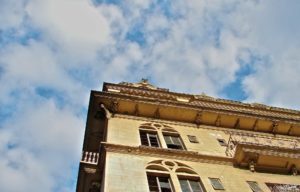
Luneta Hotel: A Timeless Jewel of Manila’s Architectural Heritage
It is always a surprise for buildings, parks and houses to survive such wars as it is almost inevitable that everything will be brought down
Rizal Park, also known as Luneta, is a historic urban park situated in Ermita, Manila. Spanning 58 hectares (140 acres), it is one of the largest parks in the Philippines. The park is thoughtfully divided into three distinct sections, each offering unique features.
Rizal Park is thoughtfully divided into three main sections, each offering distinct features and attractions. The Northeastern Section encompasses 16 hectares (40 acres) and is designated as the National Museum Complex. This area includes Agrifina Circle and houses both the National Museum of Natural History and the National Museum of Anthropology, making it a central cultural hub that showcases the rich historical and biological heritage of the Philippines.



ABOVE: The Rizal Monument, honoring José Rizal and unveiled in 1913, is located in Rizal Park, designated in 1955, and underwent major renovations in 2011.
ABOVE: The Rizal Monument, honoring José Rizal and unveiled in 1913, is located in Rizal Park, designated in 1955, and underwent major renovations in 2011.
The Central Section, located south of Maria Orosa Street, covers 22 hectares (54 acres) and extends down to Roxas Boulevard. This part of the park is centered around the Rizal Monument, which stands as a significant landmark. Here, visitors can find several notable attractions, including the Open-Air Auditorium, the Independence Flagpole, and the Central Musical and Dancing Fountain, all contributing to the park’s vibrant atmosphere.
To the southwest, the Southwestern Section features Burnham Green, a spacious 10-hectare (25-acre) open field that provides a large area for recreational activities and gatherings. This section also includes the Quirino Grandstand and the Manila Ocean Park along Manila Bay, offering a scenic and expansive setting for various events and leisure activities.

ABOVE: Rizal Park, also known as Luneta, is a historic 58-hectare urban park in Ermita, Manila, and one of the largest in the Philippines, divided into three distinct sections each offering unique features.
ABOVE: Rizal Park, also known as Luneta, is a historic 58-hectare urban park in Ermita, Manila, and one of the largest in the Philippines, divided into three distinct sections each offering unique features.
Rizal Park occupies a site historically known as Bagumbayan during the Spanish colonial period, located near the historic Walled City of Intramuros. Its origins date back to 1820 when the Paseo de Luneta was completed on a marshy stretch of land next to the beach. Before becoming a park, this area was home to Barrio Nuevo, or Bagumbayan, a small settlement established in 1601. The local church originally housed the Black Nazarene, but following the demolition of the village and its church, the statue was relocated to San Nicolas de Tolentino in Intramuros, with a replica later enshrined at Quiapo Church. This relocation is commemorated annually on January 9 during the Traslación, or Feast of the Black Nazarene.
Adjacent to Bagumbayan Field was the Paseo de la Luneta, also known as the Plaza of the Lunette or Paseo de Alfonso XII, named after King Alfonso XII of Spain, who reigned from 1874 to 1885. This plaza was a vibrant center of social activity in the early evening, featuring paths and lawns surrounded by a broad driveway called “La Calzada” (The Road), where carriages would circulate.
During the Spanish colonial era, particularly from 1823 to 1897, Rizal Park gained notoriety as a site for public executions. Among the 158 political prisoners executed here were the three Filipino priests, Mariano Gomez, José Burgos, and Jacinto Zamora—collectively known as Gomburza—who were executed by garrote on February 17, 1872, following their alleged involvement in the 1872 Cavite mutiny.


The park’s most prominent feature, the Rizal Monument, is a bronze-and-granite landmark that stands as one of the most famous sculptural monuments in the Philippines. It is customary for visiting dignitaries to lay a wreath at the monument, which not only features a statue of José Rizal but also enshrines his remains. The monument was established following Act No. 243 approved by the United States Philippine Commission on September 28, 1901, to honor José Rizal, the Filipino patriot, writer, and poet. An international design competition was held between 1905 and 1907, inviting sculptors from Europe and the United States to submit entries with an estimated cost of ₱100,000 using local materials. The first-prize entry was by Carlos Nicoli of Carrara, Italy, titled “Al Martir de Bagumbayan” (To the Martyr of Bagumbayan). However, the contract was awarded to Swiss sculptor Richard Kissling for his design titled “Motto Stella” (Guiding Star). After more than twelve years, the monument was unveiled on December 30, 1913, on the 17th anniversary of Rizal’s death. His poem “Mi último adiós” (“My Last Farewell”) is inscribed on the memorial plaque, and the site is guarded by ceremonial soldiers from the Philippine Marine Corps’ Marine Security and Escort Group.


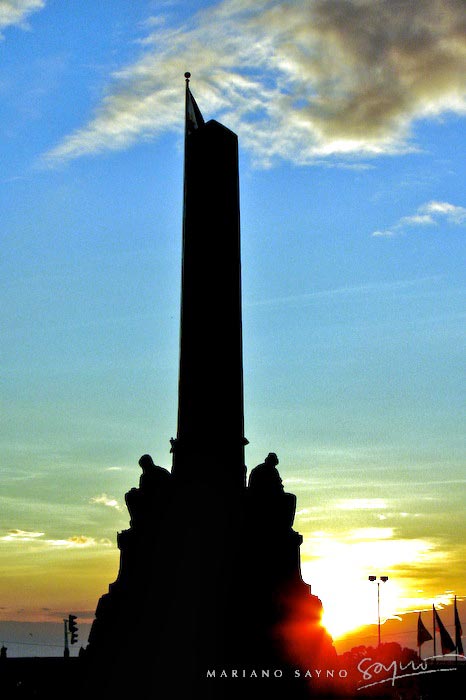



ABOVE: The silhouette of the Rizal Park monument glows golden against the sunset backdrop of Manila Bay at Luneta Park.
ABOVE: The silhouette of the Rizal Park monument glows golden against the sunset backdrop of Manila Bay at Luneta Park.
The area was officially designated as a national park on December 19, 1955, by President Ramon Magsaysay, covering approximately 16.24 hectares (40.1 acres) around the Rizal Monument.
In 1957, President Carlos P. Garcia issued Proclamation No. 470, transferring the park’s administration to the Jose Rizal National Centennial Commission. By 1961, the National Library was inaugurated at the park in honor of Rizal’s centennial. Management was later handed over to the National Parks Development Committee (NPDC), established in 1963 by President Diosdado Macapagal.

ABOVE: The Independence Flagpole in Luneta Park marks the spot where the Philippines declared its independence on July 4, 1946, symbolizing the country’s freedom and pride.
ABOVE: The Independence Flagpole in Luneta Park marks the spot where the Philippines declared its independence on July 4, 1946, symbolizing the country’s freedom and pride.
In 1967, President Ferdinand Marcos renamed Luneta National Park to Rizal Park. Under NPDC executive director Teodoro Valencia, the park was expanded, and the Chinese and Japanese Gardens were established through donations from the Taiwanese and Japanese governments. Valencia also introduced the popular “Concert at the Park” event series.
In 2011, Rizal Park underwent a significant renovation by the National Parks Development Committee. The restoration was led by William Schaare, a German-Filipino who had previously designed the old musical dancing fountain in the 1960s. The renovation included the restoration of notable features such as the Flower Clock, now known as the World-Class Filipino Bloom, the Noli Me Tangere Garden, and the Luzviminda Boardwalk. These enhancements were completed in time for the 150th birthday celebration of José Rizal.

Rizal Park has been the site of several pivotal events in Philippine history. On February 18, 1981, the park hosted the beatification mass of Saint Lorenzo Ruiz and his companions, marking a historic first as it was the first beatification ceremony held outside the Vatican, coinciding with Pope John Paul II’s apostolic visit. On February 16, 1986, the park became a crucial venue for mass protests, including the Tagumpay ng Bayan rally, which opposed the rule of Ferdinand Marcos and culminated in the People Power Revolution. The park was also central to the Philippine Centennial Celebrations on June 12, 1998, which featured a Grand Centennial Parade and drew over five million people to celebrate the one hundredth anniversary of the Philippine Declaration of Independence. Additionally, Rizal Park has served as the venue for presidential inaugurations every June 30, starting from 1992, underlining its significance in the nation’s political and cultural events.


The park is home to several notable venues that enhance its role as a vibrant cultural and entertainment hub. The Open-Air Auditorium, designed by the renowned national artist for architecture Leandro Locsin, offers a variety of free performances to the public, organized by the NPDC, the Department of Tourism, and People’s Television. The auditorium hosts a diverse array of shows, including dance, theater, and musical performances by both local and international artists. It also features “Cinema in the Open-Air,” which provides free screenings of critically acclaimed films.
The Quirino Grandstand, originally known as the Independence Grandstand, was designed by architect Juan M. Arellano to accommodate the large crowds expected for the proclamation of Philippine Independence on July 4, 1946, and to alleviate congestion in front of the Legislative Building. Designed in a Neoclassical style, the grandstand was later modified by Federico Illustre, chief architect at the Bureau of Public Works. Completed on a reclaimed area along Manila Bay, it became the site where President Elpidio Quirino was inaugurated. Since then, it has been the traditional venue for presidential inaugurations and numerous significant political, cultural, and religious events.
The Parade Grounds and Burnham Green are key areas within the park. The Parade Grounds are popular for fun runs, races, motorcades, and parades. Named in honor of American architect Daniel Burnham, Burnham Green is a large open space designed to accommodate large gatherings and serve as a picnic area. It also hosts various sports activities and features notable landmarks, including a Narra tree planted by Pope Paul VI and a bronze statue of San Lorenzo Ruiz gifted by Pope John Paul II.
Valor’s Hall (Bulwagan ng Kagitingan), located within the Light and Sound Complex, is distinguished by its artistic design and is a sought-after venue for events and cocktail receptions, renowned for its elegant setting.



RELATED STORIES

It is always a surprise for buildings, parks and houses to survive such wars as it is almost inevitable that everything will be brought down
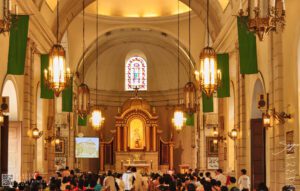
Malate Church stands as a profound symbol of faith, resilience, and artistry, preserving its sacred role and architectural splendor through centuries of triumphs and trials.
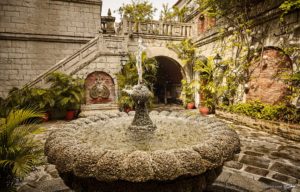
Casa Manila is a living museum that features the lifestyle of a wealthy Filipino family living during the last years of the Spanish colonial period,
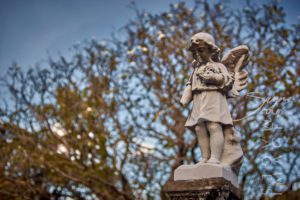
As one of the oldest cemeteries in Manila, Campo Santo De La Loma, commonly referred to as the La Loma Cemetery, is one of the
Rizal Park also includes several beautifully curated gardens. The Children’s Playground, located in the southeastern corner, was renovated in 2011 to provide a modern space for children. The Chinese Garden features an ornate gate with swirling dragons and includes a lagoon surrounded by pagodas and gazebos with red pillars and green-tiled roofs. The Japanese Garden, established to promote friendship between Japan and the Philippines, offers a tranquil setting with Japanese-style landscapes, lagoons, and bridges. The Noli Me Tangere Garden, recently unveiled, includes the Heidelberg fountain—a gift symbolizing Filipino-German friendship—and a bust of Ferdinand Blumentritt. Finally, the Orchidarium and Butterfly Pavilion, created in 1994 from a former parking lot, showcases a rich variety of Philippine orchids and butterflies and serves as a popular venue for weddings.


ABOVE: Luneta Park is a popular and easy-to-reach place in Manila where people of all ages come to relax, especially on weekends and holidays.
ABOVE: Luneta Park is a popular and easy-to-reach place in Manila where people of all ages come to relax, especially on weekends and holidays.
Among the notable attractions at Rizal Park is the Diorama of Rizal’s Martyrdom, located north of the Rizal Monument. This set of statues dramatically depicts José Rizal’s execution at the actual site where he was martyred, contrary to the common belief that the monument itself marks the execution spot. In the evenings, a light and sound presentation titled “The Martyrdom of Dr. Jose Rizal” offers a multimedia dramatization of Rizal’s final moments, with his poem “Mi Último Adiós” inscribed in black granite at the site.

The Statue of the Sentinel of Freedom, also known as the Lapu-Lapu Monument, is a tribute from the people of Korea honoring Filipino support during the Korean War. This statue commemorates Lapu-Lapu, the Visayan chieftain who resisted Spanish colonization and is celebrated as a national hero. As of 2024, the statue is undergoing restoration and re-erection as part of the park’s eastern redevelopment.


The Independence Flagpole, standing at 105 feet (32 meters) and restored to a height of 150 feet (46 meters) in August 2013, marks the location where Philippine independence was proclaimed on July 4, 1946. It symbolizes the nation’s sovereignty and pride.
Kilometer Zero, located on Roxas Boulevard in front of the Rizal Monument, serves as the reference point for measuring all road distances in the Philippines, underscoring the park’s importance as the geographical center of the nation.
The Musical Dancing Fountain, known as the largest and most vibrant in the country, presents an impressive show with water jets soaring up to 88 feet, complemented by fireballs, exploding water rockets, and a peacock spray water screen, providing a captivating visual and sensory experience.


ABOVE: Luneta Park is home to beautiful gardens filled with lush greenery and colorful flowers, making it a great place to relax and enjoy nature.
ABOVE: Luneta Park is home to beautiful gardens filled with lush greenery and colorful flowers, making it a great place to relax and enjoy nature.
I’m looking forward to the stories and images leaving a lasting positive impression on you, just as they have on me. Stay connected with us on social media for a weekly exploration of travel assignments and breathtaking visuals. Our focus is on championing local tourism, showcasing small businesses, and honoring the magnificence of the Philippines through the content we curate. Join us in spreading the word by clicking the ‘share’ buttons below. Your support means the world to us.
EXPLORE MORE about

Casa Manila is a living museum that features the lifestyle of a wealthy Filipino family living during the last years of the Spanish colonial period,

Malate Church stands as a profound symbol of faith, resilience, and artistry, preserving its sacred role and architectural splendor through centuries of triumphs and trials.
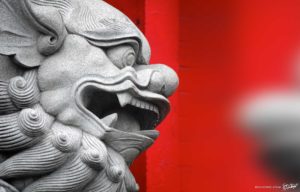
In addition to being considered the oldest Chinatown in the world, Binondo Chinatown is also the center of trade and commerce in Manila City. In
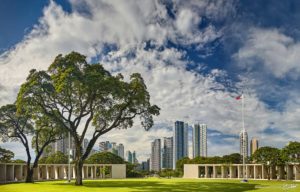
Manila American Cemetery and Memorial is located in the heart of Taguig City on the lands of Fort Bonifacio and serves as the largest grave
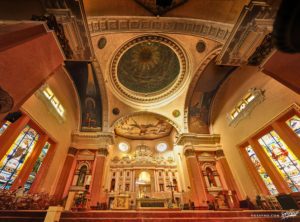
The Binondo Church is a historic church in Manila, located in the District of Binondo, near the Plaza San Lorenzo Ruiz. It was previously called
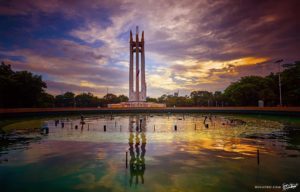
One of Quezon City’s main parks is the Quezon Memorial Circle, which is located in Quezon City and is surrounded by an elliptical road, making

As the nation’s first ever world-class marine theme park, Manila Ocean Park is located in Ermita Manila, within the Philippines’ largest urban resort/aqua-themed hotel complex
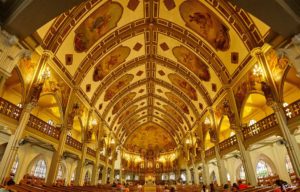
The Manila Abbey San Beda, or formally known as Abbey of Our Lady of Montserrat, is a Benedictine men’s monastery located along the streets of
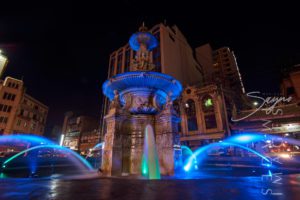
I experienced the vibrant and colorful life of downtown in full. I took some time to appreciate the beauty of Santa Cruz Church and Plaza
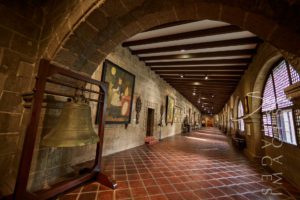
The San Agustin Museum is located adjacent to the UNESCO World Heritage Site, San Agustin Church. It is located in Intramuros—the walled city of Manila—and
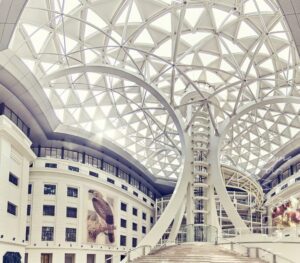
Explore the vibrant tapestry of Manila through its four national museums, each a unique gem in the city’s cultural crown. These four distinguished establishments are
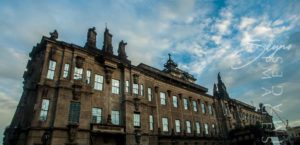
UST, also known as the University of Santo Tomas, is a private Roman Catholic university located in Sampaloc, Manila. It was founded on 28 April
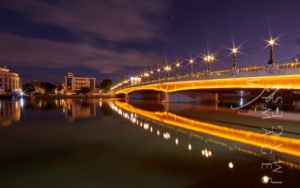
The newly restored Jones Bridge is easily recognizable by its beautifully designed black lamp posts—the same ones that were there when the bridge was first

It is the home of the popular Asian elephant, Mali, as well as 90 other species. As well as being a landmark in Manila, the
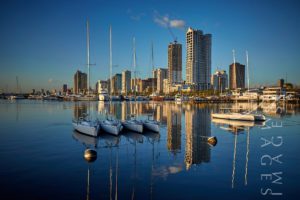
It is considered to be one of the world’s great harbors, the Manila Bay, and it serves as the Port of Manila, Philippines. Having once
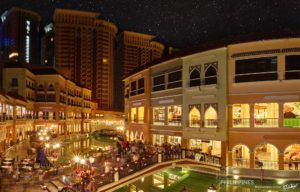
Located in the heart of the Taguig City, the Venice Grand Canal is a lifestyle mall development under the Megaworld Lifestyle Malls Located inside the
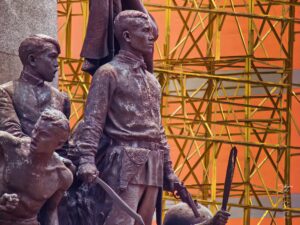
The Bonifacio Monument, also called Bonifacio Monumento or Monumento, proudly stands in Caloocan City, Metro Manila. It is a powerful symbol created by the National
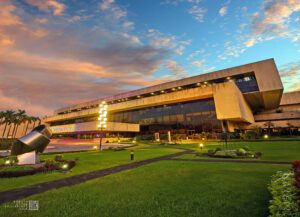
The Philippine International Convention Center (PICC) stands as a monument to the Philippines’ ambition to be a key player on the global stage. With its
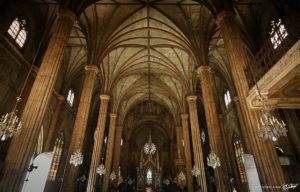
San Sebastian Church is a Roman Catholic Minor Basilica located in Quiapo, Manila. It’s also known as Minor Basilica of San Sebastian or San Sebastian
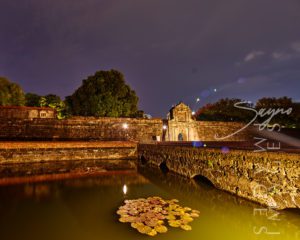
It is also known as the Walled City, and during the Spanish Colonial Period it was synonymous with the city of Manila. Intramuros was also
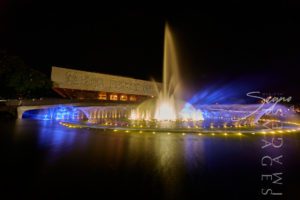
The Cultural Center of the Philippines or CCP was founded in 1966 under the directive of former President Ferdinand Marcos, in order to reinforce and

It is always a surprise for buildings, parks and houses to survive such wars as it is almost inevitable that everything will be brought down
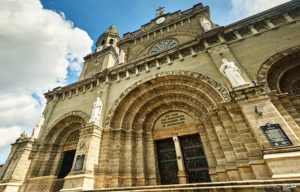
Originally built in 1880, the Manila Cathedral is the current version of the longstanding Church of Manila. It is a masterpiece of architecture that was
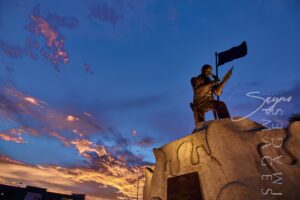
The Andres Bonifacio Birthplace Monument in Tutuban, Divisoria stands as a powerful symbol of Filipino patriotism and a tribute to the courage and leadership of Andres
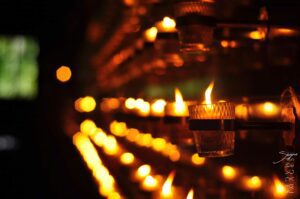
The Padre Pio Chapel, also known as the St. Pio of Pietrelcina Chapel, holds a special place in my heart as a photographer. It revealed
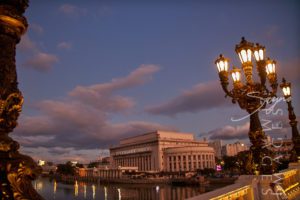
The Manila Post Office, officially known as the Manila Central Post Office, is a distinguished example of neoclassical architecture, originally designed by Juan M. Arellano,
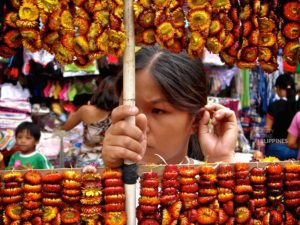
Plaza Miranda is a public square bounded by Quezon Boulevard, Hidalgo Street and Evangelista Street in Quiapo, Manila. It is the plaza which fronts the

As one of the oldest cemeteries in Manila, Campo Santo De La Loma, commonly referred to as the La Loma Cemetery, is one of the
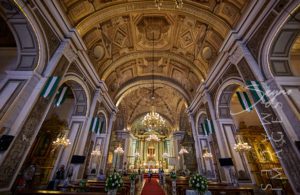
Known as one of the most important baroque churches in the Philippines and as one of the only four baroque churches in the Philippines that
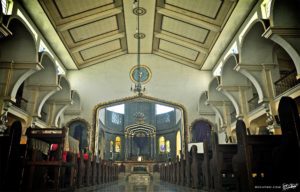
The Polo Church, formally known as the San Diego de Alcala Church, resides in the Polo neighborhood of Valenzuela, Manila. This church has a captivating
BROWSE BY CATEGORIES